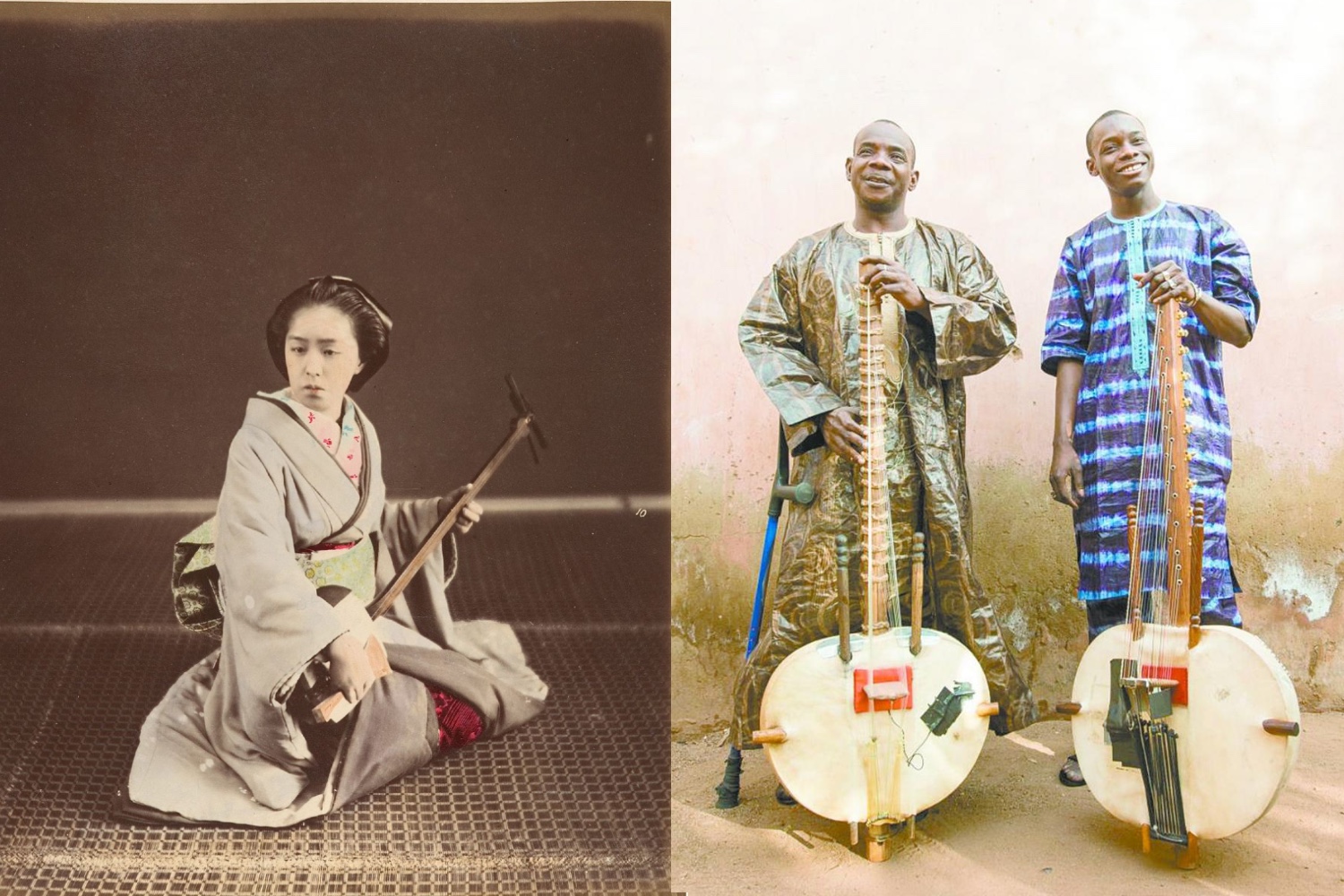Exploring the most unique chordophones from around the globe.
While it seems that much of the contemporary canon has been shaped by instruments like the guitar and violin, there’s a great many chordophones out there from cultures all around the world that are just as essential to the story of music as we know it today.
To shine a light on some of these, we’re taking a trip around the world to discover nine unique stringed instruments and share their stories today.
Don’t miss out on all the latest music gear announcements from around the world – keep your eyes peeled on our Product News section for all news and updates as they arrive.
Zither (Germany)
Deriving from the same word as guitar, the ‘Zither’ is one of the oddest, yet coolest instruments to come out of Germany. Zithers are most commonly played like a guitar, through strumming / plucking the strings with a pick.
The first time a Zither – style instrument was seen was way back in 433 BC, with a Chinese distant relative of the Zither Family, called a guqin, found in the tomb of a Chinese Royal.
There’s a bunch of different members within the Zither Family, including the Concert, Alpine and the more contemporary Autoharp, which you can see played below by Dolly Parton.
Shamisen (Japan)
The Shamisen is also known as the Japanese lute. It’s got an oddly small square body, and the neck and head resembles that of a guitar. Like the guitar, the Shamisen is also plucked, and fingers are placed at various spots on the neck to produce different sounds.
Much alike the Bouzouki, the Shamisen is constantly tuned based on the genre the musician wants to play.
Bouzouki (Ireland / Greece)
A member of the lute family, this peculiar instrument is also played with a pick / your fingers. It’s shaped like a guitar, with a bunch of frets that’ll give you a stack of different and awesome sounds. With steel strings, you’ll get a resonant, sharp sound, that sounds a lot like a Mandolin.
The Bouzouki is a relatively modern instrument, first seen in Greece in the early 1900s. An interesting fact about the Bouzouki; they’re constantly tuned and re-tuned based on the song / what scale someone wanted to play.
The Chapman Stick (America)
Created by musician Emmett Chapman in the 1970s, the Chapman Stick is played with both hands through tapping on the strings. It’s quite reminiscent of a large electric guitar or lap guitar.
It’s almost like you’ve got a full rhythm section when you’re shredding on a Chapman Stick, you can play bass, melody and chords simultaneously.
Possibly the greatest representative of the Chapman Stick is legendary session bassist Tony Levin, best known for his work with King Crimson and Peter Gabriel. Hear him shredding it in this raucous live rendition of King Crimson’s ‘Elephant Talk’ below.
Crwth (Wales)
Hard to say out loud, the Crwth is also known as a crowd, a rote or a lyre. You’d hear it in medieval English folk music, Welsh music and, after a long break in music, a number of folk musicians are bringing back the long forgotten practise of playing the Crwth.
Crwths have six strings, tuned to G, C and D, and then the octaves of those notes to give it an extra flair. They’re usually played with a bow in a manner similar to a violin.
Calabrian Lira (Italy)
The traditional Italian three-stringed Lira of Calabria is usually played with a bow, and the player supports it on their knee, due to its awkward shape.
The music played on the Lira of Calabria are solely for accompaniment; pieces that serenade, and songs suitable for dancing, called tarantellas.
Over the last decade, some of Italy’s most popular music creators have become aware of the Lira, and as a result, it has made its way into a myriad of contemporary releases, solidifying its national significance.
Charango (Andes)
Another member of the lute family, the Charango is one of the smallest members of the family, only at around 50cm long. Some of the first Chanrango instruments were created using the dried shell of an armadillo, which isn’t too common nowadays.
It’s played a lot like a guitar, but tuned completely differently, to GCEAE, and interestingly, also unlike a guitar, they are all tuned within the same octave.
There’s a bunch of different Charangos in a variety of sizes, ranging from less than 30cm to around a metre in length.
Kora (West Africa)
The 21-string Kora is built from a Calabash, which is a traditional fruit, dried and then covered with cow skin. It’s a wholly unique instrument and an integral part of West Africa’s rich musical culture, with jalis and griots – musicians considered to within the elite echelons of West African society – using the kora to sing historical tales and entertain royal subjects.
As you’ll see below, when you play a Kora, the sound is resemblant of a harp, but with a much more unique tonal quality. One of the greatest living Kora players today, Amadou Suso, is currently based in Melbourne and often performs solo and with his group The Senegambian Jazz Band, taking the classic sounds of the instrument and juxtaposing it against a modern jazz-fusion backdrop.
Harpeji (America)
The Harpeji was created in 2007 by American music engineer Tim Meeks. It’s said to be a cross between a piano and a guitar, with the instrument finding fans in the likes of virtuosos like Stevie Wonder, Cory Henry and Jacob Collier.
There’s five octaves on the average Harpeji, ranging from A0 to A5. The instrument lets the player to use all their fingers on the strings and cover many octaves, and one hand is able to cover around two octaves. As of 2020, there is reportedly only 600 Harpejis in the world,
Check out a compilation of Stevie Wonder shredding a Harpeji below.
Find out more about the Harpeji via Marcodi Musical Products.







